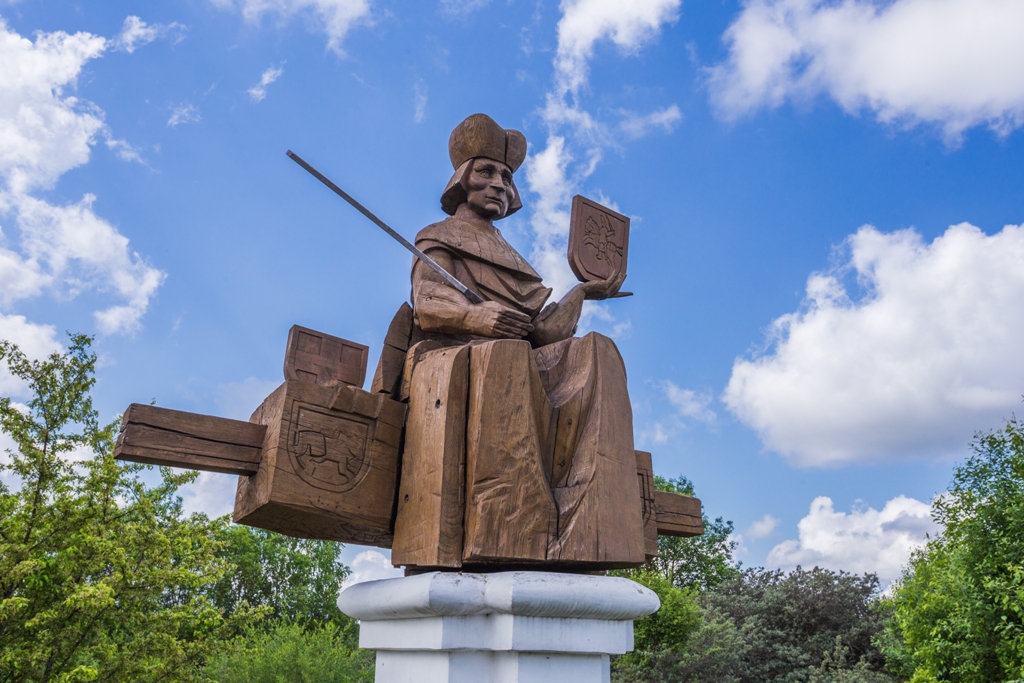A road now popular with history enthusiasts leads to Old Trakai. In commemoration of the 570th anniversary of the Grand Duke’s death, the Trakai Historical National Park Directorate established the symbolic Vytautas the Great Route. The Old Trakai community also contributed to this project. Presented to the public in 2000, this route features nine stops along the Trakai–Old Trakai path, each marked by a wayside shrine symbolizing significant events in Vytautas the Great’s life and his contributions. A map of Vytautas's Route, precisely indicating the location of each wayside shrine, is available online or at the tourist information center.
The first wayside shrine, depicting St. George, was erected in 1998. Located on a small hill with a view of the Trakai Island Castle and Trakai Basilica, this sculpture symbolizes the Grand Duke’s warrior spirit and his fierce and victorious battles. From here, the road leads to the historical capital of Lithuania, Old Trakai. St. Casimir’s chapel represents Vytautas the Great as a builder of castles and churches. The establishment of Benedictines in Old Trakai is commemorated by a shrine dedicated to St. Benedict.
"The Flight into
Egypt" depicts a couple riding a horse, symbolizing the arrival of the Karaites in Lithuania. The woman holds a basket of cucumbers, reminding us that the Karaites brought this vegetable and its cultivation traditions from the distant Crimea. St. Catherine of Alexandria, the patron saint of students, symbolizes Vytautas’s efforts to send young people to study in Western Europe and the first Lithuanian student at Kraków University, Michael of Old Trakai.
As you enter Old Trakai, a sculpture honoring Vytautas’s parents, Kęstutis and Birutė, stands. They hold in their hands the crown that Vytautas the Great never received. "The Sorrowful Pieta" recalls the tragic death of Kęstutis in the Kreva Castle. This wayside shrine has garnered special attention from local residents: prayers are often offered, and a flower garden is maintained around it. In the very site of the Old Trakai Castle, stands a sculpture of the Blessed Virgin Mary with the Child, symbolizing pure motherhood and attachment to the homeland.
The last and most recently erected sculpture is of Vytautas the Great sitting, holding a sword in one hand and the Lithuanian state symbol, the Vytis, in the other.





 Entertainment
Entertainment
 Food establishments
Food establishments





























 54.619439, 24.962939
54.619439, 24.962939
 Get directions
Get directions









